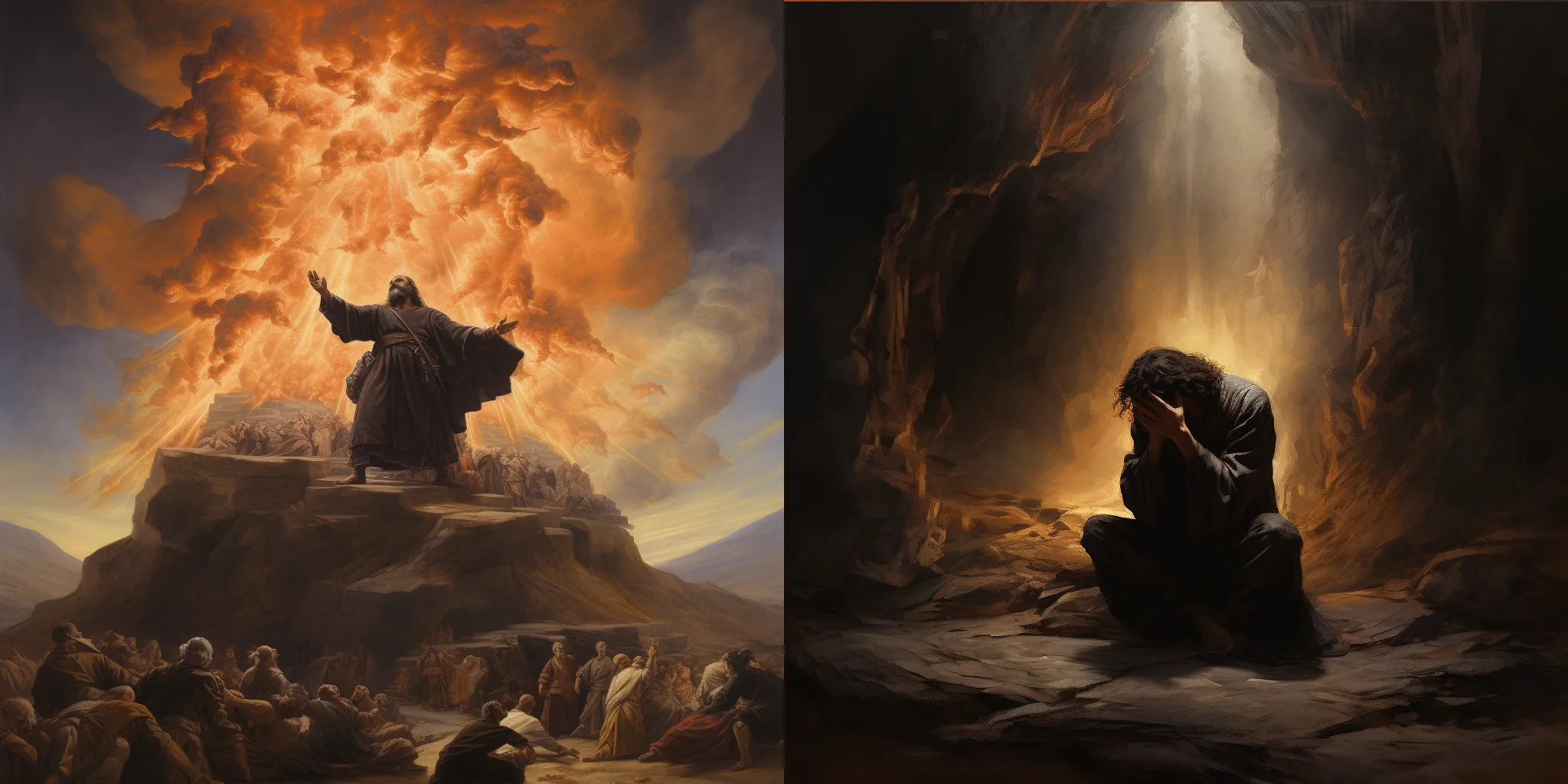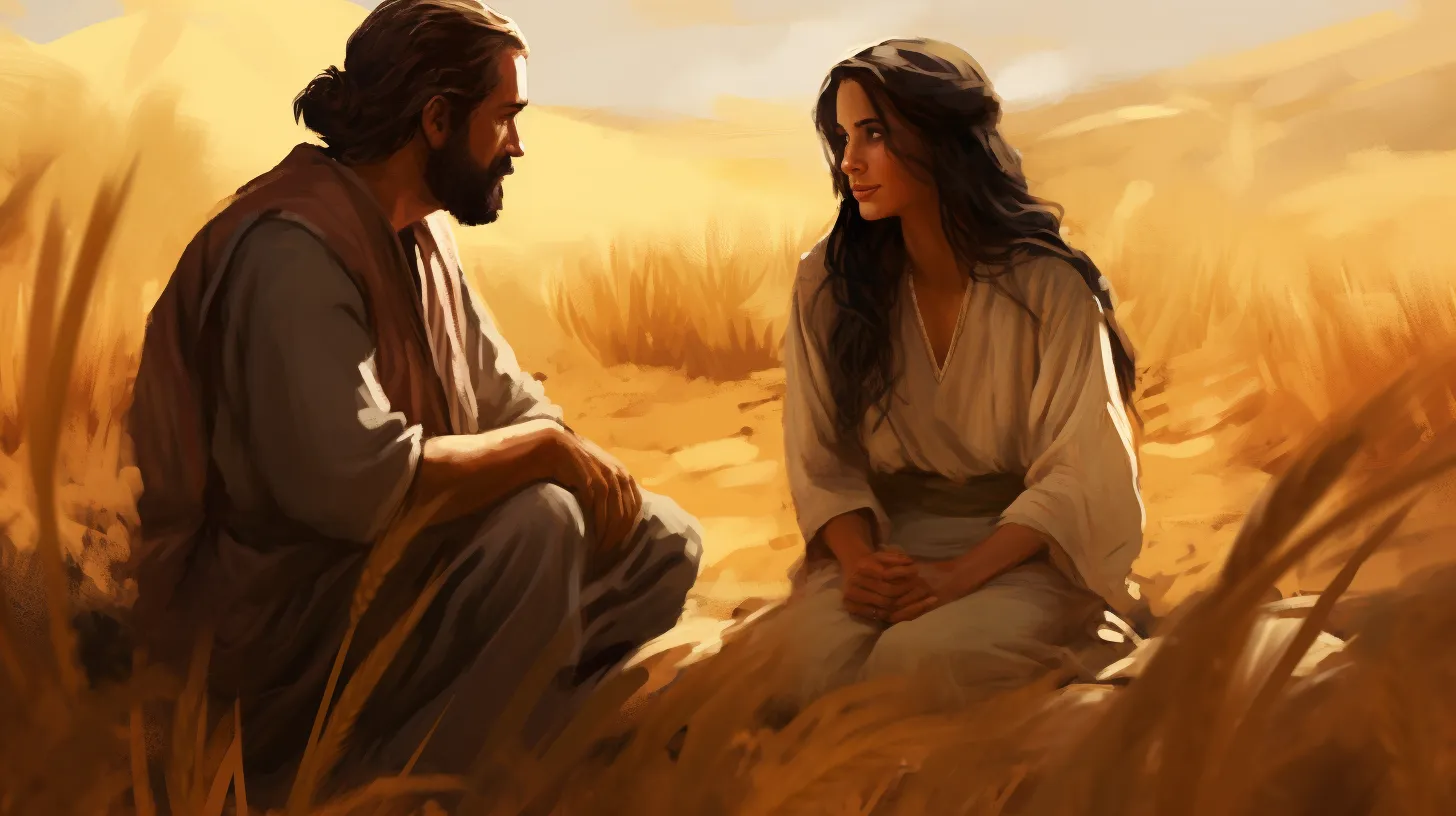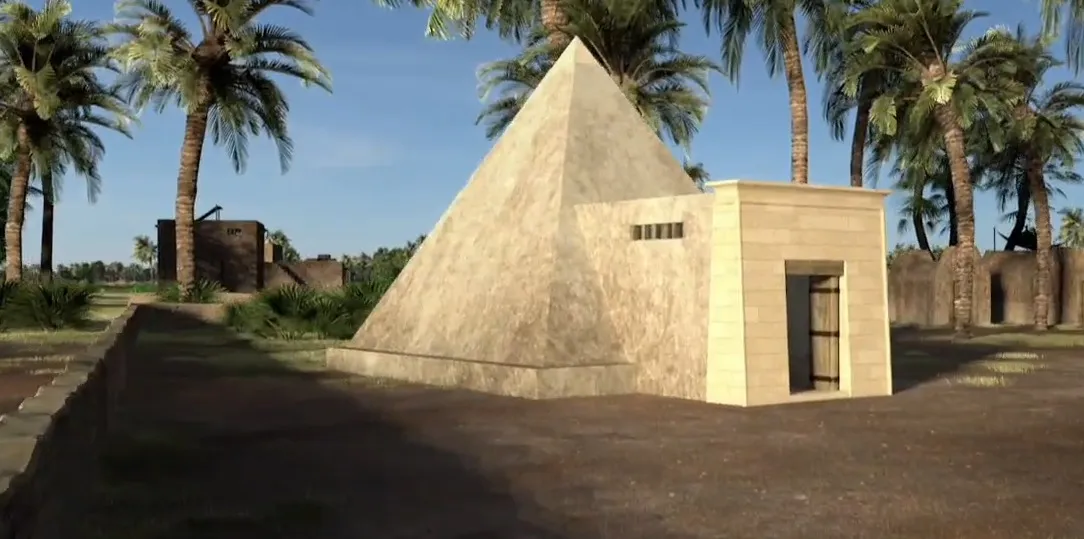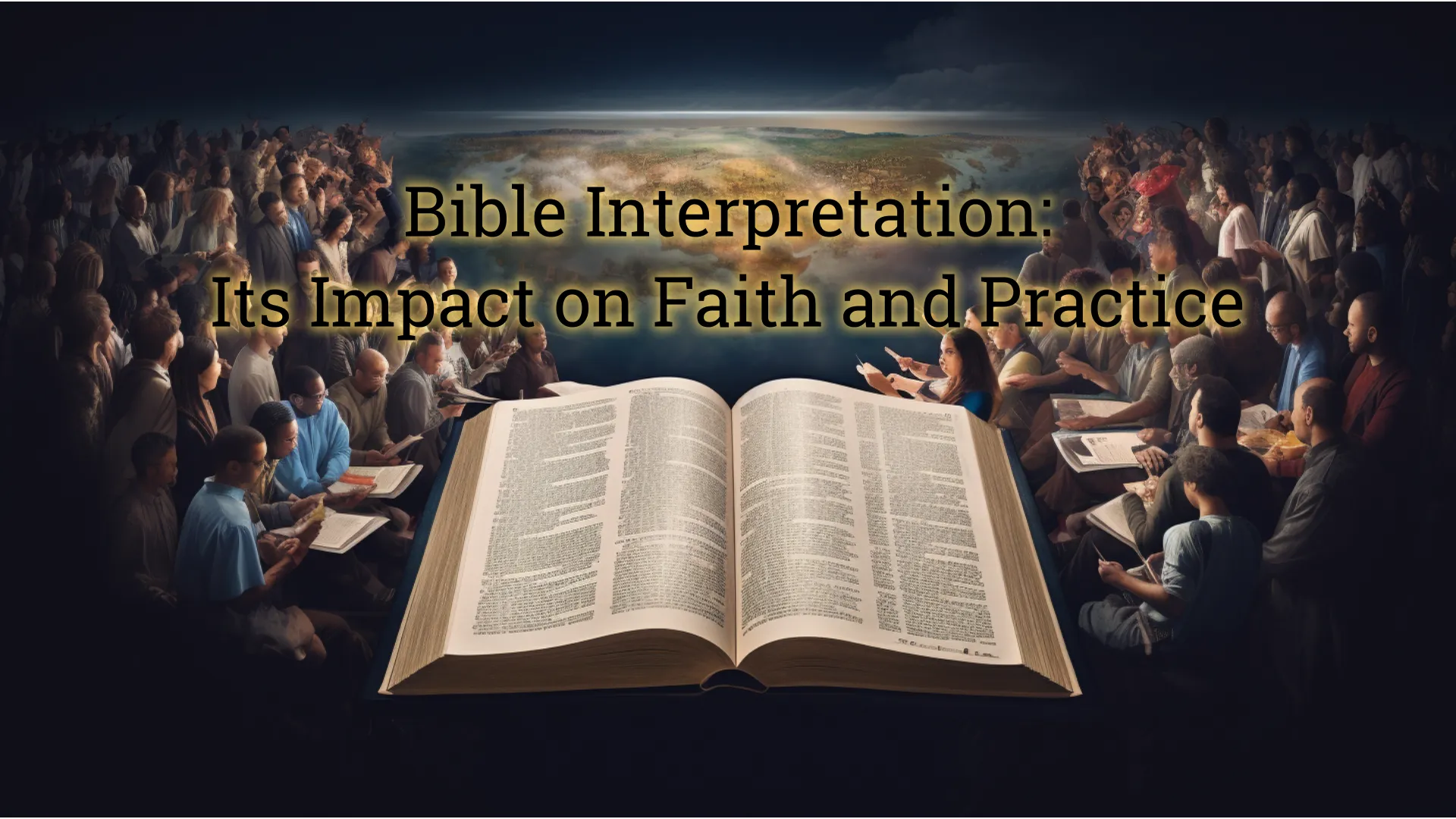What the Forest Can Teach Christians about Thriving Communities
The forest has many things to teach Christians about living in thriving community. In this study, we examine scientific discoveries about the forests and some spiritual lessons that we can draw from them.
Transcript
The lesson I'd like to present this morning is an observation, really, that the forest has many things to teach Christians about living in thriving community. I'm gonna share some , scientific discoveries about the forests and some spiritual lessons that we can draw from them.
The Brutal Competition in Nature
Because of the pervasive influence of evolutionary thought in our society, we tend to view the natural world around us through the lens of unforgiving and brutal competition. Lord Tennison wrote, "nature is red in tooth and claw." That certainly is true when we look at the animal kingdom, and we may think that the plant kingdom is a little more peaceful, but even plants in their competition for scarce resources seem to show little regard for each other.
Strangler Fig and Tonka Bean Tree: Extreme Examples
One of the most disturbing examples of this is the strangler fig. If you're familiar with this plant, it produces a fig fruit. Birds eat the fruit and then deposit the seeds wherever they may go. It actually isn't meant to sprout in the ground. It wants to land in the crook of the tree because there it will sprout and begin to grow and vine and really begins to strangle the tree. That's why it's called a strangler fig. It gets both support and nutrition from the host plant and it will eventually creep down the tree to the ground and take root while other tendrils will creep up and really take over the whole canopy of whatever tree is there.
And oftentimes it will kill its host. And seeing that is a little bit disturbing to see that type of thing taking place.
A much more violent example is the tonka bean tree that thrives in the rainforest of Panama, where there are frequent thunderstorms. Usually lightning striking a tree does a lot of damage, including boiling the sap blowing the bark off, shattering parts of the tree and potentially killing it.
But the tonka bean tree has such high conductivity that the lightning strike runs down the trunk like a wire and is dissipated in the ground instead of harming the tonka bean tree. And not only does this attribute protect the tonka bean tree, it actually benefits in other ways. Because in the forest there's lots of parasitic vines like lianas or strangler figs that wrap themselves around the other trees.
In the case of the tonka bean tree, if it gets hit by lightning, the electricity essentially blasts off these parasitic plants. And so it gets purged of its parasites whenever it happens to get hit by lightning.
And since over the course of many years, a lot of parasitic vines can attach to a tree it's also common for the lightning striking this particular tree to blast off so much of these parasitic vines in such amount that it actually smashes against the surrounding trees damaging the neighbor trees. A lightning strike on a tonka bean tree clears approximately 78% of the parasitic vines, and damages its neighbors eliminating on average over nine trees worth of growth on the surrounding trees. And as a result, the tonka bean tree has more space to grow after a lightning strike, and they estimate that a tonka bean tree hit by lightning produces 14 times more seeds than one that hasn't been so lucky to be struck by lightning.
Those are pretty extreme examples. But really every tree in the forest is competing for scarce resources. A forest when it is first becoming established it can have thousands of tree seedlings per acre, but only 50 to a hundred trees will survive and grow to maturity.
Evolutionary Worldview vs. Christian Worldview
From the singular evolutionary worldview these observations reinforce the idea that we live in a brutal, meaningless, unforgiving world where the only certain thing is a fight for survival and seemingly pointless death of millions of living things. But we realized from a Christian worldview that sin and death and suffering and injustice entered the world because of sin.
It's hard for us to imagine how much sin entering the world changed, not just human relations with God and human relations with each other but also the physical creation. We do know the Garden of Eden that God gave vegetable matter to both humans and animals for their food.
And it's hard for us to imagine some of the I carnivores of our day eating plants. But that was how they originally lived. Later God gave animals to man to eat. We can read about that in Genesis chapter nine. And of course, we see animals eating other animals; a very common occurrence.
So we're living in a far different world today than the one God created. And the reason for the fact of nature being "red in tooth and claw" is because sin entered the world. That is the explanation. We often see this harsh side of nature. We don't often see examples of how it was intended to be from the beginning.
The Common Mycorrhizal Network (CMN)
In our study this morning, we're actually going to look at one of the features that still exists in nature, that are an amazing example of nature cooperating rather than competing. In fact, it's such an amazing example that is confusing to scientists how such a system could arise in a world that they view as purely one of survival of the fittest and driven by competition.
The aspect of nature we're gonna talk about this morning is referred to as the common mycorrhyzal network. It combines Myco, which refers to fungus, with rhyzal, which is referring to roots. And so it's describing fungus that live at the roots of trees, underground.
And Wikipedia has this to say, "A common mycorrhyzal network or CMN is a underground network found in forest and other plant communities created by the hyphae of mycorrhyzal fungi joining with plant roots. This network connects individual plants together. These relationships are most commonly mutualistic, with both partners benefited."
As a matter of fact, 90% of plant species have these strong relationships and interactions with the fungal organisms found in the soil. These organisms connect with the plant's roots. And also grow and expand into the soil surrounding the plant, making the plant much more efficient in absorbing nutrients, as well as absorbing water from the soil.
In return, the plant, which is of course using photosynthesis to generate sugar sends part of the sugar that it produces to the mycorrhyzal fungi in the ground below it. And so this cooperation between a tree and these fungus in the ground: the fungus helps the tree absorb nutrients from the ground better and, in return, the tree gives some of the sugars and other nutrients that it has to the mycorrhyzal fungi.
But something very interesting happens when the fungal organism in the ground expands and meets the fungus that's connected and surrounding a neighboring tree. If they are compatible these mycorrhyzae begin exchanging resources with each other, effectively connecting the two trees together in a cooperative system. This can actually link up an entire forest in one network with all the trees sending sugar and nutrients into the network and drawing sugar and nutrients from the network. You may have heard of this discovery referred to as the "wood wide web."
The largest known example of this is in Oregon's Malheur National Forest. This single genetic individual named the humongous fungus covers approximately 3.7 square miles or 2,400 acres, and is considered one of the largest and possibly the most massive single living organism on earth. Trees like the redwoods are some of the most massive single tree, but this humongous fungus is actually miles wide and much more massive than any single tree. And it's connecting in that forest, of course, hundreds and thousands of trees who are then able to cooperate because this fungus is connecting them all together.
Resource Sharing in the Forest
Now, what I'd like to do next is talk about several ways in which this system that God designed and put into place in the world allows the forest to thrive through cooperation.
And the most important aspect is through sharing resources. We mentioned that the trees are using their roots to draw water and minerals up from the ground.
And then they're using their power of photosynthesis to turn sunlight into sugar. The mycorrhyzal fungi allow it to draw those nutrients from the ground much more efficiently. But the system also allows the trees to share. And so if you're a tree and you're in a place that has, let's say 10 out of the 12 essential minerals in your soil you're missing two of them.
What are you gonna do? It turns out through this mycorrhyzal network I'm going to switch to calling it the CMN. 'cause I can say that easier. But the tree will send out nutrients that it has withdrawn from the soil and it will receive nutrients that other trees have gathered from the soil.
And so it's able to get a more complete nutritional profile and get all the resources that it needs to thrive and to grow. And so that's one of the main things that this CMN provides. The ability to share resources so that what one tree has extra of it's able to share with others and in turn get things that it is in need of from the trees around it.
Biblical Teachings on Sharing
We are as Christians in the body of Christ generally, but most specifically within the local church are living in community. That gives us an opportunity to thrive by sharing the resources that we have. And so in Galatians 6:6, we're told, "let him who is taught the word share and all good things with him who teaches."
Paul tells Timothy, in 1 Timothy 6:18, "Let them do good, that they be rich in good works, ready to give, willing to share."
In Hebrews 13:16, we read, "Do not forget to do good and to share, for with such sacrifices God is well pleased."
And in 1 Peter 4:8, it says, "Above all things have fervent love for one, for love will cover a multitude of sins. Be hospitable to one another without grumbling. As each one has received a gift minister it to one another as good stewards of the manifold grace of God."
What resources should we be sharing within the body of Christ? We're not collecting nutrients in a way that we can share nutrients with one another, but we can share a lot of other things.
We can share our time, we can share our money, we can share our possessions, and we should also be sharing our concern for our brothers and sisters of Christ. We should be sharing our love and affection with our brothers and sisters in Christ. We should be sharing our hearts and our hands with our brothers and sisters in Christ.
And if we share a meal with our brothers and sisters in Christ, we will be helping them to be more physically nourished than they were before.
Paul talked about his attitude of openness and sharing with the Christians in Corinth in 2 Corinthians 6:11, "Oh Corinthians, we have spoken openly to you. Our heart is wide open. You're not restricted by us, but you're restricted by your own affections. Now, in return for the same, you also be open."
And so amazingly, as it may seem, these two trees standing next to each other in the forest may seem not to be connected at all. But the reality is underground, beneath the surface, they are sharing with one another in a way that is allowing both of those trees to be in better off than they otherwise would.
Now that picture of community and sharing is something that we should demonstrate also within the body of Christ.
Helping the Weak in the Forest and the Church
Because of the CMN, the forest is able to help the weak. And I mentioned that if there's a tree that is in a place where it's not able to get all the nutrients that it needs. It could fail to thrive, it could end up dying if it doesn't somehow get a benefit.
Most forests, there aren't forest shepherds going around looking at all the trees and saying, okay which one is mineral-deficient? You may do something like that in your garden where you're cultivating the ground. But in the case of the forest, they're on their own, but no, they're not on their own.
I don't think it's correct to say that this network has intelligence, but because the way God designed it, the resources in one part of the forest will flow to where they are most needed. Each individual resource is transported by the network to the tree that needs it the most in that general vicinity.
And so for that reason, the sapling that get hardly any sunlight and are weaker and not able to be as strong as the strongest trees are receiving the most from this network because it's in the most need.
Perhaps one of the trees has been damaged by a lightning strike or or a infestation of some kind of insect pest and is needing more at that particular point in time while it's healing. It may not be obvious to us, but underground the resources, the minerals, the nutrients and even the sugar., Between 10% and 40% of the sugar that this tree produces, it sends through that network both to feed the mycorrhyzal fungi and the other trees who may need it.
So what are we supposed to do within the body of Christ? We are also supposed to help the weak. Paul was an example of this in Acts 20:33 when he talked with the Ephesian elders. He said, "I have coveted no one's, silver or gold or apparel. Yes, you yourselves know that these hands have provided for my necessities and for those who are with me. I have shown you in every way by laboring like this, that you must support the weak and remember the words of the Lord Jesus, that He said, 'It is more blessed to give than to receive.'"
And in 2 Corinthians 8:13, he told those Christians, "for I do not mean that others should be eased and you burdened, but by an equality that now at this time, your abundance may supply their lack, that their abundance also may supply your lack. That there may be equality, as it is written, 'he who gathered much had nothing left over, and he who gathered little, had no lack.'"
When it comes to the trees one of the primary ways that they know that a tree needs help is because it's not sharing. In other words, any tree that is taking in one of these essential nutrients it doesn't wait until it's full to the brim of that nutrient to say, okay, I've got some extra, so I'll share some., Actually, as soon as it begins harvesting any nutrient, it begins to send, not all of it, but part of it out into the network. And because of that, the part of the forest where there are none of these nutrients and the signaling chemicals that go along with it is the part that the CMN knows needs that specific nutrient.
I was thinking about that. I was realizing that sometimes that's how we know that our brother and sister in Christ is in need of help. It's when they stop sharing these things that we talked about. Stop sharing times, stop sharing attention, stop sharing conversations, stop worshiping with us. That's, those are warning signals. Those are dangerous signals we have a weak brother.
Now in the forest, the CMN recognizes that and sends resources to that area. What should happen within the body of Christ when that happens?
Warning Signals and Mutual Support
Another way in which the CMN helps the trees and the forest to thrive is by warning each other of danger.
There are several dangers that can happen within the forest that scientists have realized: "Wait a second! These trees who are experiencing the danger are actually warning the other trees in the forest."
One way that they were aware of them doing that previously was by releasing volatile compounds from their leaves that would travel not only to the other parts of the same tree but also to neighboring trees. And so if there was a, let's say an insect attack there's a lot of defenses that a tree can do to make its leaves less palatable. It puts, certain compounds into the leaf and bark produces them internally and puts it out to the leaf and bark so that when the insect
decides to eat this leaf, it'll say this isn't a very good leaf, not nearly as good as this tree on the other side of the forest, who hasn't put poison or distasteful matter in its leaves. And so that's one way that the tree can warn other trees is by sending out these volatile compounds that travel essentially through the air.
But they've also discovered that the similar information is sent underground through the mycorrhyzal network of insect attacks, another is fungal infections, as well as sending out a signal that there's drought in a particular area. And if the neighboring trees get this early warning, they're able to mount a early defense. And rather than waiting until the infestation has already eaten their leaves, they've already protected themselves by making their leaves less palatable.
Is there any parallel to this within the body of Christ? We're told to confess our sins to one another and to pray for one another that we may be healed in James 5:16. When we share what we are struggling with, it not only lets our brothers and sisters know that we need help so that we can get it, but as they are helping us with our spiritual problems, that helps to warn them against the same or similar types of challenges. And that's why Galatians 6:1 tells us: " if anyone is overtaken the default, let those of you who are spiritual restore such a one, considering himself, lest you also be tempted."
It may seem like sharing our problems is detracting from the community as a whole. But in reality, we're not only, by sharing our struggles, getting the help we need, but we are serving as a warning to others who may having similar struggles to mount a defense. So the family of God is able to thrive better in that way.
Cooperation in Death and Legacy
We also see within the forest trees providing support to one another even in death. We mentioned that if the tree is attacked by something or is experiencing drought that it sends out some warning signals chemically both through the air and through the CMN to the neighboring plants. But it's also the fact that when a tree is sick enough to where it can't recover it actually, instead of absorbing more nutrients from the CMN, it begins to offload the nutrients and minerals that it has to ensure that even if it dies or when it dies that the benefit of its efforts in procuring those nutrients go to other trees in the forest.
And we see something similar in 2 Peter 1:3, where Peter tells these Christians, I'm not going to be here for much longer, but I want to make sure that what I have experienced and what I know in the Lord benefits as many people as possible. And that's one of the reasons that he's writing the epistle of 2 Peter. He tells them, "Therefore, brethren, be more diligent to make your call and election sure. For if you do these things, you'll never stumble. For so an entrance will be supplied to you abundantly into the everlasting kingdom of our Lord and Savior Jesus Christ.
"For this reason, I will not be negligent to remind you always of these things, though and are established in the present truth. Yes, I think it is right as long I as I am in this tent to stir you up by reminding you, knowing that shortly I must put off my tent just as our Lord Jesus Christ showed me. Moreover, I will be careful to ensure that you always have a reminder of these things after my decease."
Because of the perceptions of our society, which generally tends to show little respect for the old and their wisdom and their experience there are many parts of our culture that aren't ready to listen or benefit from the experience and the teachings of the aged. But not so within the body of Christ. We are to honor our elders and respect our elders.
And because of that attitude and that desire then those who have lived long faithful lives of service in spite of many challenges and hardships are in a position that their experiences and their wisdom won't go to waste when they pass on, but they will be able to share that with younger generations.
And so we have the scriptures instructing older women to teach the younger women. And Paul telling Timothy that the things that you have received these commit to faithful men who will tell others also. And this is another way in which the I guess the forest is showing us how we can cooperate so that the family of God and the church of God may thrive better.
Symbiosis vs. Competition: Evolutionary Implications
One other observation that we can make is this type of cooperation that we see in the plant world really causes people to stop and take notice. I don't know if you've seen articles about this discovery and the related discoveries; what they were referring to as the wood wide web. But because it is such a striking example of cooperation and mutual benefit in a world in which we're generally presuming that everyone's fighting to the death in a survival of the fittest situation when plants or animals cooperate the ideas of evolution end up being questioned.
In fact, there are evolutionary scientists who consider this process of symbiosis in which various plants or animals, in this case it's a plant cooperating with a fungi, which then enables many different species of plants to cooperate in this way. And these observations cause some evolutionary scientists to consider symbiosis, including the widespread mycorrhyzal network to be, in some ways, even more important than competition in understanding the history of life.
That's interesting... Wait a second! There's obviously a lot of competition. But wait a second! There's such striking examples of cooperation that don't make sense in our evolutionary expectations. Is it possible that somehow symbiosis may be equally important to understanding where life came from?
Now they're not turning off their views of evolution. But that is causing them to say, wait a second, we better take these things into account because it doesn't fit what we would expect from our evolutionary worldview. That's what happens when plants and animals cooperate when they're not expected to.
Human Cooperation: A Testament to God's Love
What happens when human beings cooperate when they're not expected to? Guess what? Human beings are not expected to cooperate. We're pretty good at getting on each other's nerves taking much more account of wrongs done to us than wrongs done to other people and causing war, murder, cheating, lying, stealing, and all kinds of mayhem against one another.
But the people of God are intended to be different. And when they are different, it causes the world to stop and take notice. That was Jesus' intention from the beginning. John 17:20, He says, "I do not pray for these alone," that is, the 12 disciples, "but also for those who will believe in Me through their word, that they all may be one. As you Father are in me and I in You, that they also may be one in Us, that the world may believe that You sent Me. And the glory which You gave Me, I have given them that they may be one just as We are one, I in them and You in Me. That they may be made perfect in one, and that the world may know that You have sent Me and have loved them as You have loved Me."
Jesus intends his followers to be very good at doing the things that, oddly enough, the forest seems to be really good at doing too. When we are, Jesus says, when we show that type of love and unity that will demonstrate to the world that God truly sent Jesus into the world. It will show to the world that God's love is being poured out through Jesus into the hearts of human beings who are then able to change how they act towards one another, to create a community where each individual can thrive in spite of other differences and challenges that they might have in their lives in a way that not only benefits them individually, but in a group way and a way that glorifies God. What a beautiful thing that God has intended for us to experience!!
Conclusion: Applying Forest Lessons to Our Congregation
Before we conclude, I thought that we should maybe just think about ourselves as a local congregation and think about these principles of cooperation within our local forests. And think about ways to implement these things as the body of Christ.
I think we're pretty good in general about taking care of the weak and looking out for each other and sharing what we have with our brothers and sisters in Christ. But we always have room for growth and opportunity to get better. We have a significant challenge in our congregation because there are many of our members who are dealing with ongoing spiritual, emotional, and physical distress.
And because of that, there is a lot of cooperation and help and encouragement that is being done and needs to be done. And I'm so grateful to each one of you that is engaged in that good work. Many of you are doing things that the rest of us don't know about without any kind of accolade or knowledge of others. The right hand is not knowing what the left hand is doing.
But you are building up the weakest among us by making a difference in their life, by sharing what God has given you with your brothers and sisters in Christ. But it is also the case that we have very isolated members who are spiritually weak, in part because they're not engaging in this network of sharing that God intends for us to do.
That's a danger and a warning signal for their spiritual wellbeing. And it may be more rewarding for us to put in the effort in sharing with those who are eager and willing to share in return. But we are called to share with our weak and isolated brethren as well as those who are not isolating.
Of course, we can't force them to receive what we want to give or force them to respond, but we should regularly offer to connect and give them the opportunity to either open up or push us away. And in reflecting on the example of the trees I thought it was a good opportunity for us to do a check each individually
Oftentimes we feel like we don't have much to share, okay? And we might think that way because we don't have a lot, and so we don't have much to share, but we probably have more than we realize.
And again, the point at which to start sharing is not when you have an abundance it's when you have enough to share. John the Baptist 's criteria was, "He who has two cloaks, let him give to him who has none." And that is the philosophy of the trees as well. As soon as they start collecting resources, at least some of what they are gathering is going out through that network of sharing.
I hope that will give us some ideas of how we can be better building up one another within the body of Christ. We're doing a good job of that, but we can do a great job of that. And when we do, not only will we personally be blessed because it is better to give than to receive. Our brothers and sisters in Christ will be blessed, and God will be glorified because people will look at the Blue Ridge Church of Christ and say, "Wow! Look at how they take care of one another! Look at how they love one another!" Then they'll look at us individually and say, "Wait a second! There's nothing special about these people! That's pretty obvious!" What is special is that God has joined us in the community that turns regular people who would normally not get along into people who are able to cooperate and thrive enough that God himself is glorified by the way we interact and build one another up.






